27 Most Famous Renaissance Paintings in the World in 2025
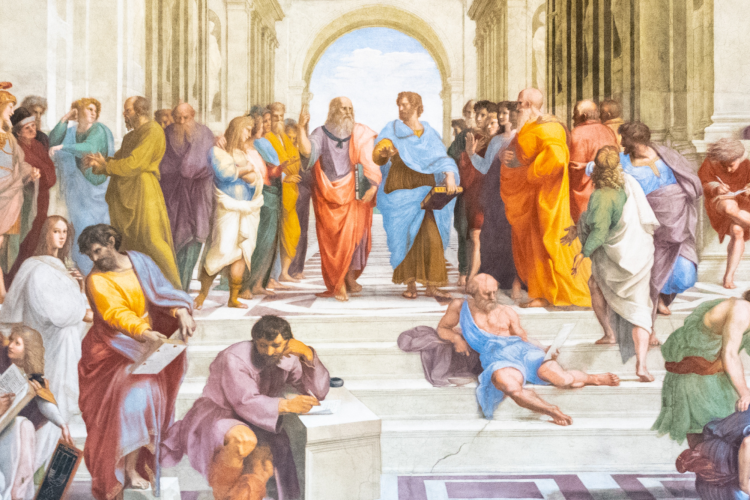
People often admire Renaissance paintings for capturing the human experience in a variety of techniques that were truly innovative for the time period. In fact, artists still employ many of these techniques today.
Before you dive into this list of the most famous Renaissance paintings and famous painters in the world, it’s important to understand the characteristics of Renaissance painting to appreciate its impact today. What characterizes a Renaissance painting? What defines Renaissance artwork? What are the 4 types of painting during the Renaissance? Let's build our appreciation of this art by reading on.
Jump to Section
What Defines Renaissance Artwork?
What Are Some Renaissance Art Characteristics?
The Renaissance period was a time of rebirth that took place between the 14th and 17th centuries. It was a transitional age, marking a shift the Middle Ages to a more modern time. Many fields experienced significant growth in innovation and ideals, art included.
So, what makes a painting a Renaissance painting? Renaissance art was characterized by a removal from the abstract, utilizing more representational forms. Many Renaissance paintings grew from biblical inspirations and incorporated characteristics like Classism, Realism, Naturalism, Humanism and Secularism. The forms used in Renaissance paintings would inspire many art movements such as the Pre-Raphaelite Brotherhood and its most famous work, the Ophelia painting.
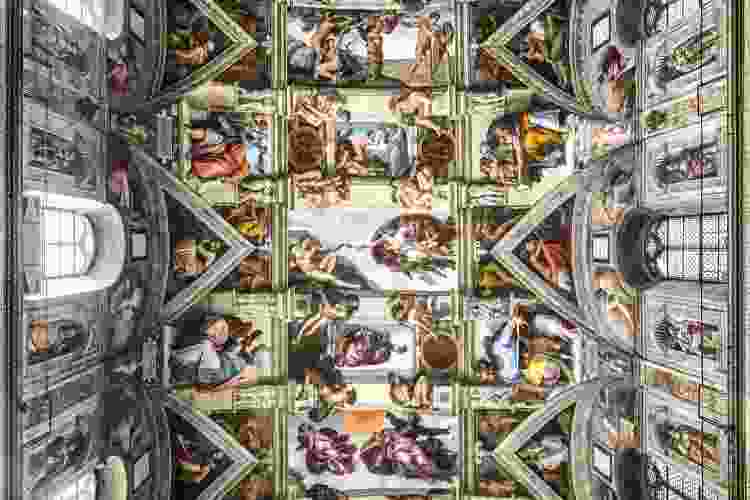
What Are the 4 Types of Painting During the Renaissance?
Now, what makes a painting a Renaissance painting? The four types of painting during the Renaissance were called cangiante, chiaroscuro, sfumato and unione.
Cangiante is derived from the Italian term “cangiare,” which means “to change.” Cangiante developed as a method to express value like shadows and highlights since pigmentation was still being developed.
In a painting that utilizes cangiante, one color is laid over another to create value, versus simply mixing the color with black or brown, two popular mixing pigments of the time.
Chiaroscuro is all about contrast. Chiarosco paintings, typically in portrait form, use contrasts of light and dark to emphasize the volume, modeling and feeling of the subject. Later on, Vermeer paintings would master chiaroscuro.
According to The National Gallery in London, Leonardo da Vinci, for example, employed chiaroscuro in his Renaissance paintings to create “a vivid impression of the three-dimensionality of his figures, while Caravaggio used such contrasts for the sake of drama.”
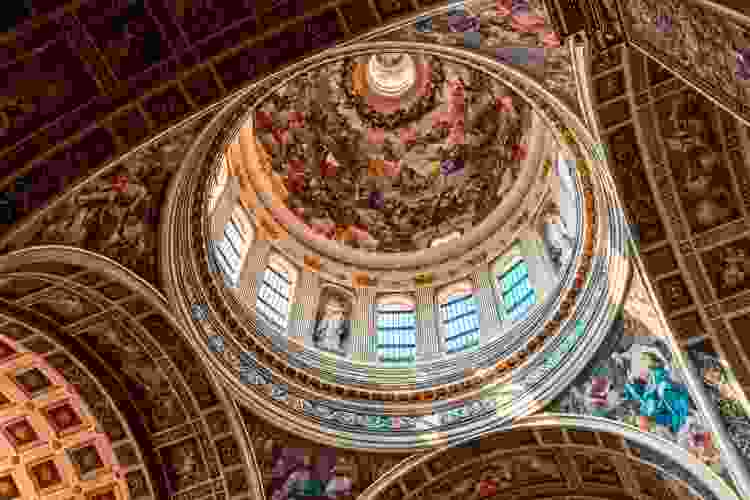
Sfumanto is derived from the Italian term “sfumare,” meaning “to tone down.” Sfumato employs acute shading to create soft transitions between colors and tones, essentially calming the pigment. Many refer to sfumato as having an almost smoky quality that blurs contrast and eliminates harsh lines.
Unione is regarded as one of the most popular of the four techniques. Like sfumato, unione is used to eliminate hard lines and create smooth transitions between colors. However, where sfumato is dominated by the use of colors softened by light or dark tones, unione achieves a more intense tonal unity without sacrificing the intensity of a color. Unione Renaissance paintings tend to incorporate more vibrant and saturated colors as well.
From Michaelangelo to Raphel and Donatello to Titian, these painters employed a number of these techniques when creating the famous Renaissance paintings you know and love. Now that you understand Renaissance art characteristics better, it’s time to explore the 23 Most Famous Renaissance Paintings in the World.
List of the Most Famous Italian Renaissance Paintings
1. Leonardo da Vinci, Mona Lisa (1503-1506)
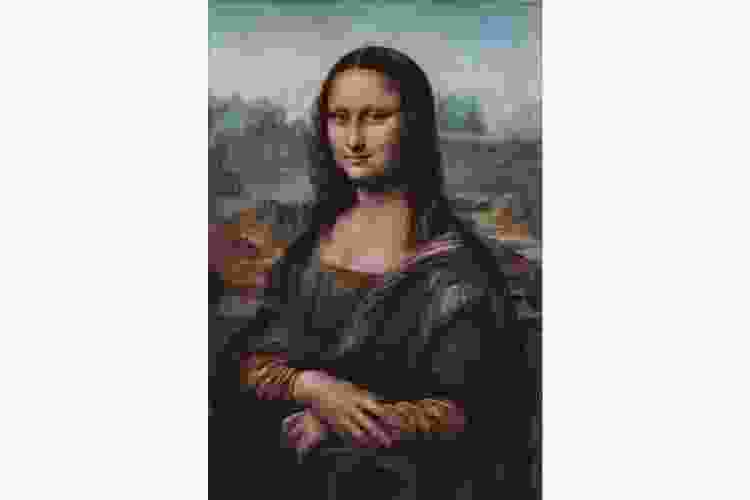
Leonardo da Vinci is thought to be the pioneer of sfumato in Renaissance painting, and the Mona Lisa is a prime example. Her skin is often described as looking supple and realistic, as if you could reach up and touch her cheek.
As far as early Renaissance paintings go, the Mona Lisa holds the torch for being one of the most culturally significant and globally celebrated.
2. Michelangelo, The Creation of Adam (1512)
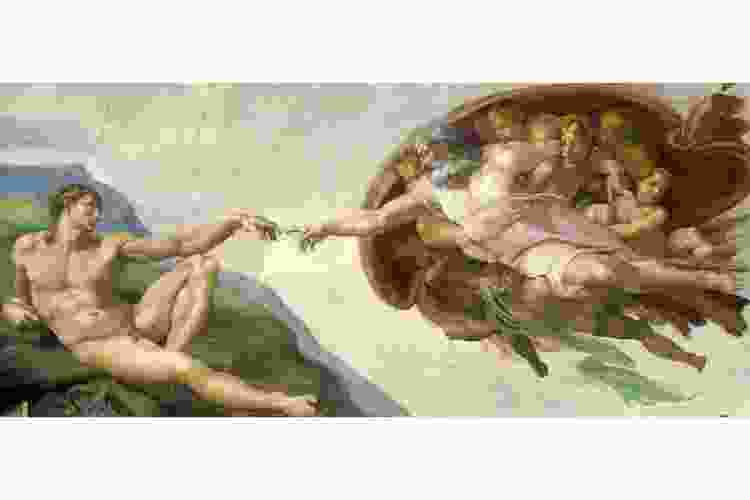
If you have ever taken an art history class, then you've probably explored the many Michelangelo paintings, especially The Creation of Adam. Although replicas of this Renaissance painting exist all over the world, the original mural is on the ceiling of the Sistine Chapel in Vatican City.
In the world of Italian Renaissance paintings, The Creation of Adam is revered for the way it portrays humanity's connection to the divine.
3. Raphael, The School of Athens (1509-1511)
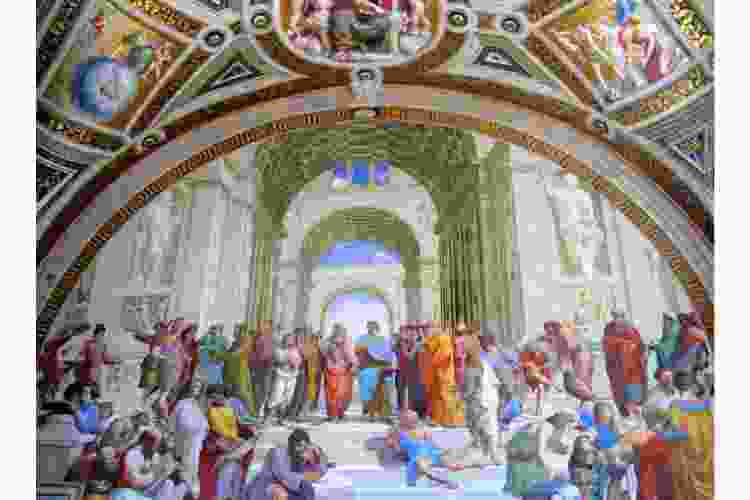
Another Vatican favorite, The School of Athens, is a respected Raphael painting of the High Renaissance. In fact, the High Renaissance is said to have ended with the death of Raphael himself.
Many High Renaissance paintings emphasized figural forms. Raphael paid special attention to figural identification, giving each of the characters in The School of Athens distinct movements and characteristics to help differentiate one from the other.
4. Sandro Botticelli, The Birth of Venus (1484-1486)
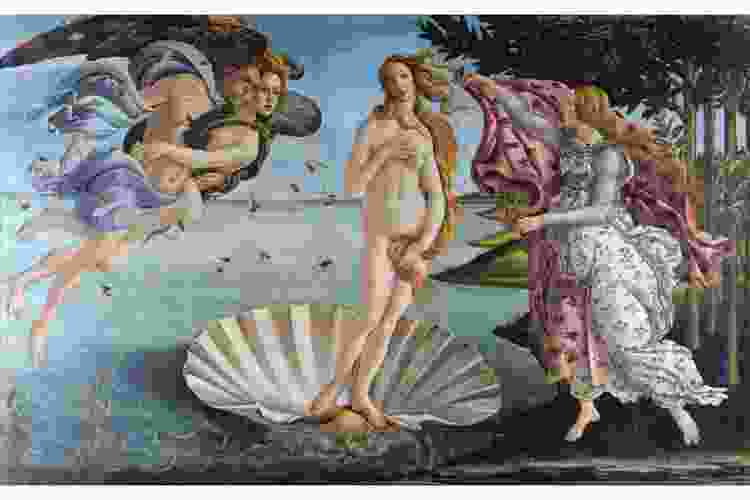
Sandro Botticelli’s The Birth of Venus depicts the Roman goddess of love, Venus, emerging from the sea on a shell. Botticelli used tempera paint to create a dreamlike scene. Tempera is a water-based paint that consists of mixing pigment with a binder like egg yolk or starch. This was one of a few paint mediums used in Renaissance painting.
Using tempera allowed him to achieve a soft, luminous quality when painting. The glide of the binder made it possible to bring intricate details to life such as Venus's hair with delicate brushstrokes. At the time, Renaissance paintings of women often idealized beauty and grace, an essence Botticelli no doubt captured here. This is by far the most famous of the Botticelli paintings.
5. Leonardo da Vinci, The Last Supper (1495-1498)
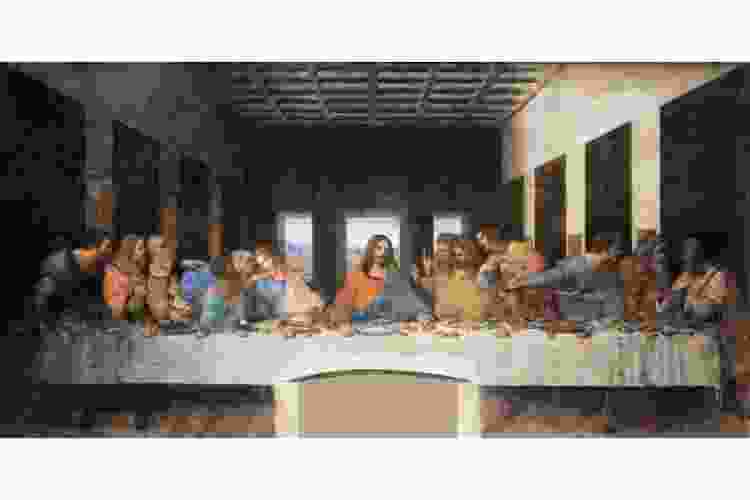
Living in the Convent of Santa Maria delle Grazie in Milan, Italy, The Last Supper by Leonardo da Vinci is a focal point of art history. Most fresco paintings at the time involved painting a mural with water-based paint on wet plaster. Instead, da Vinci painted the famous mural of Jesus and his disciples using tempera and oil on dry wall.
Although da Vinci’s technique inspired generations of painters to think outside the box, like other Renaissance paintings, the mural began to deteriorate soon after its conception. This began the age-old debate of which paint mediums to use for longevity like tempera vs acrylic paint or acrylic vs oil paint.
6. Titian, Venus of Urbino (1538)
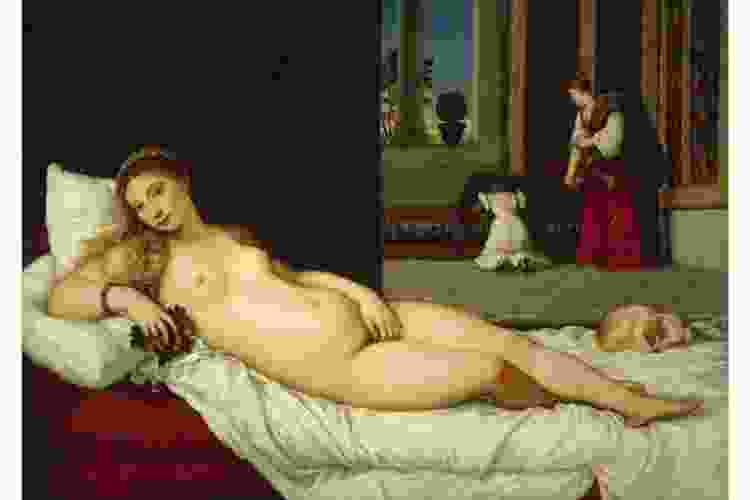
Visit the Uffizi Gallery in Florence to find one of the most celebrated Renaissance paintings of women, Titian's Venus of Urbino. Tiziano Vecelli, or "Titian" in English, painted the Roman goddess of love, Venus, nude and reclined on a couch in a lavish Renaissance palace.
Titian used one of the most popular painting techniques of the time, oil on canvas. He used rich, warm tones and fine brushwork to create soft textures and a sense of realism.
Venus glares directly at the viewer, exuding a sense of confidence that makes this Renaissance painting stand out among the rest for its erotic portrayal.
7. Michelangelo, The Last Judgment (1536-1541)
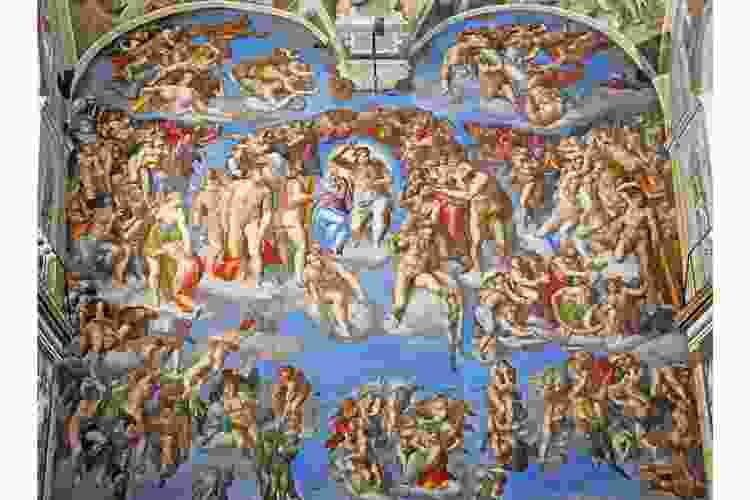
Michelangelo's The Last Judgment covers the altar wall of the Sistine Chapel in Vatican City. The fresco portrays the Second Coming of Christ who is seen surrounded by saints, angels and the resurrected. Unlike Leonardo da Vinci's technique for The Last Supper, Michelangelo applied pigment to wet plaster, essentially making the fresco an integral part of the wall itself.
According to the Khan Academy, the original characters of this Renaissance painting were painted nude and this caused quite a stir due to its location. After Michelangelo passed away in 1564, the 19th ecumenical council of the Roman Catholic Church, the Council of Trent, commissioned Daniele Da Volterra to paint on clothes. A story that’s been locked away in the volt of unknown Renaissance paintings facts.
8. Raphael, Sistine Madonna (1512)
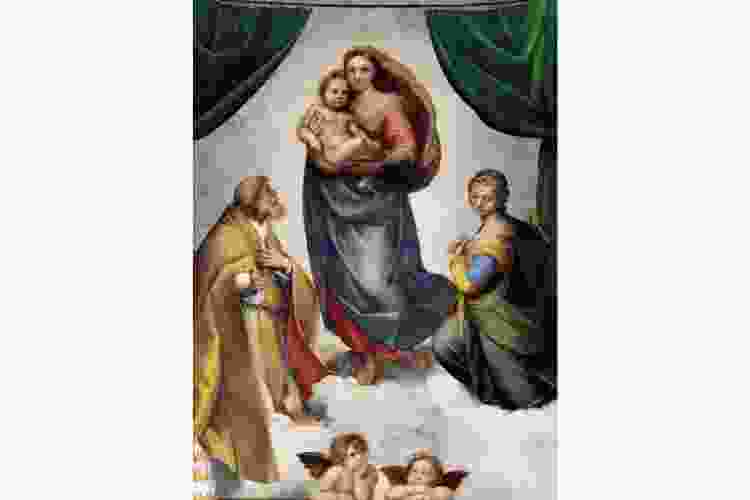
The Sistine Madonna by Raphael is one of the Renaissance paintings that famously portrays the mother of Christ in Roman Catholicism, the Madonna. In this Renaissance painting, the Madonna holds the Christ Child on a bed of clouds as two saints watch on from the foreground.
At the very bottom of the scene are two curious cherubs, who soon became prominent figures of the era. The Madonna was considered a symbol of piety, tenderness and divine grace, which Raphael depicts through his use of location and contrast. The Mother of Christ is surrounded by a halo of light as if she were appearing from the clouds.
9. Caravaggio, The Calling of St. Matthew (1599-1600)
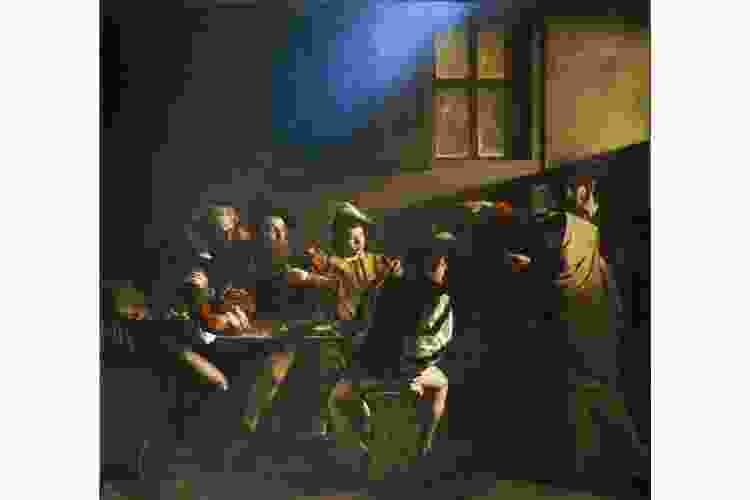
The Calling of St. Matthew is one of the most renowned Caravaggio paintings that uses examples of chiaroscuro in a Renaissance and Baroque painting. The scene is set in a rustic tavern and depicts the moment Jesus calls upon Matthew to join and follow him.
Light pours in from the right of the canvas, highlighting both Jesus and Matthew while the rest of the scene remains dark as the other characters carry on unbothered.
The Calling of St. Matthew will never join the list of unknown Renaissance paintings as it is a prominent piece of both art and religious history for many.
10. Titian, Assumption of the Virgin (1516-1518)
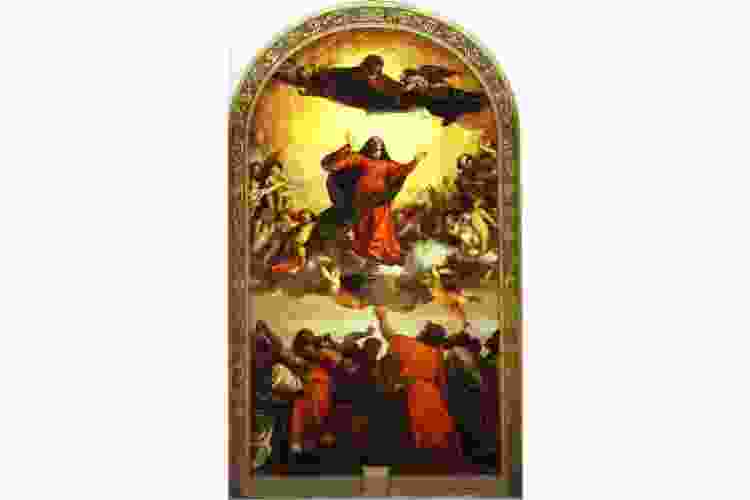
One cannot mention depictions of pivotal biblical moments in Renaissance paintings without also calling attention to Titian's Assumption of the Virgin. This Renaissance painting illustrates the moment the Virgin Mary ascends to heaven.
Titian divided the composition into three main components: apostles at the bottom, the Virgin Mary in the middle and God at the top. The characters are arranged vertically so that the viewer experiences the altarpiece from the earthbound figures to the heavenly figures, following Mary's own ascendance to heaven.
11. Piero della Francesca, The Baptism of Christ (1448-1450)
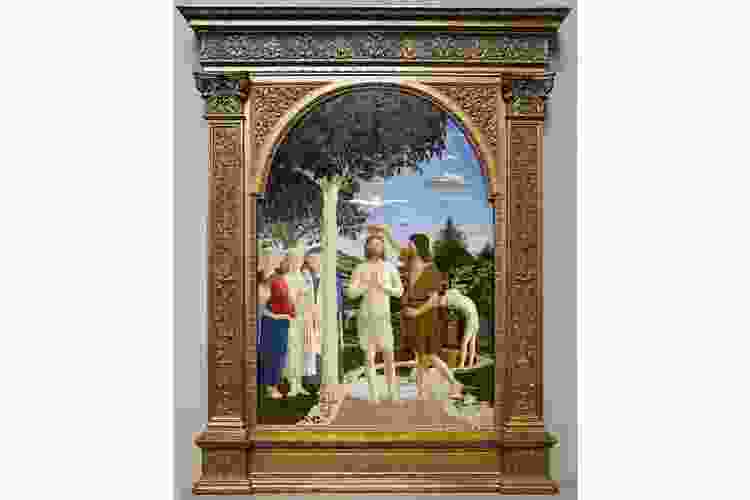
Now homed at the National Gallery in London, The Baptism of Christ by Piero della Francesca was originally painted in Tuscany between 1448 and 1450. Different from other Renaissance paintings, it was made on two pieces of wood with egg tempera paint.
Jesus stands beneath a tree as John the Baptist pours water over his head. The background illustrates a serene landscape filled with detailed trees and hills, creating a sense of depth. Francesca was made famous for his use of perspective and this Renaissance painting exemplifies this technique.
12. Andrea Mantegna, The Lamentation Over the Dead Christ (1480)
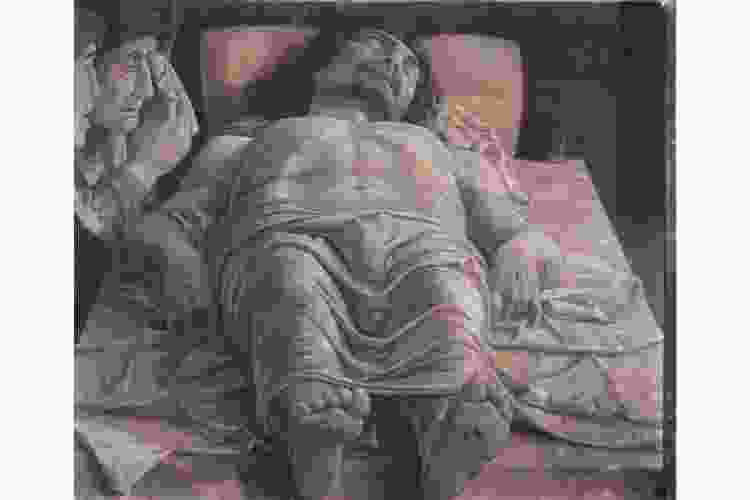
Andrea Mantegna's realistic depiction of the death of Christ in his famous work, The Lamentation Over the Dead Christ, makes it one of his most powerful works and also Renaissance paintings in general. In this Renaissance painting, Christ lies still on a marble slab as the Virgin Mary and St. John weep over him.
What makes this piece both emotional and unusual is Mantegna's use of foreshortening. He displays the body of Christ from a vertical viewpoint, focusing perception on the details of his lifeless body.
13. Leonardo da Vinci, Vitruvian Man (c. 1490)
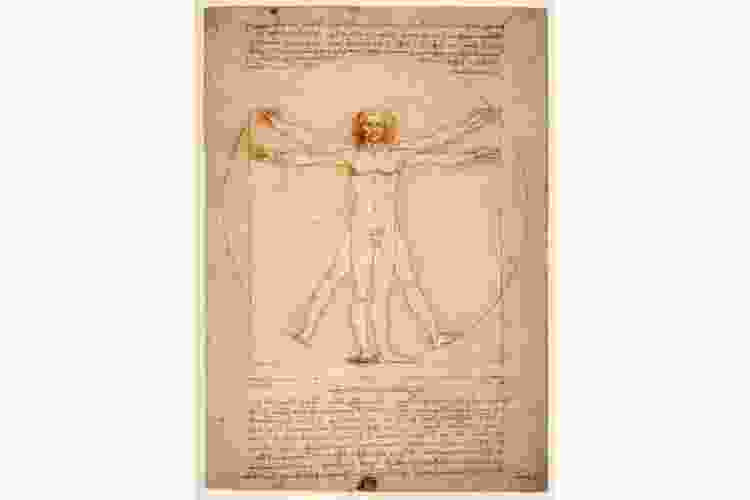
Unlike the other pieces mentioned in this list of Renaissance paintings, Leonardo da Vinci's Vitruvian Man is not actually a painting, but rather a drawing created with two simple materials: ink and paper.
Like many artists of the period, da Vinci was interested in anatomy and proportions. This artifact is a notable study of da Vinci's and it includes his own notes based on the work of famed architect Vitruvius at the bottom. The drawing is intended to illustrate the proportions of the ideal body, depicting a human man in two superimposed positions with his arms and legs spread.
Renaissance paintings characterized a shift from the abstract to a more realistic approach to figural painting. Da Vinci's drawing is an exploration of anatomical accuracy, highlighting this transition.
14. Giovanni Bellini, St. Francis in Ecstasy (1480)
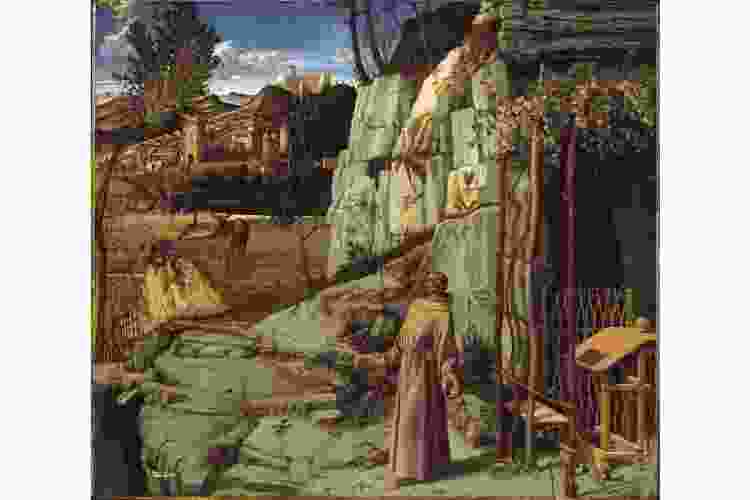
If you take a trip to a few NYC art galleries, you will find Giovanni Bellini's St. Francis in Ecstasy at the Frick Collection in New York City. This Renaissance painting captures St. Francis of Assisi in a moment of intense revelation.
He is pictured in religious garb at the bottom of the canvas with his hands outstretched. Behind him is a detailed landscape with rocky cliffs, a town off in the distance and a variety of animals and vegetation. This is one of the most wonderful Renaissance paintings that display the era's characterization of naturalism.
15. Paolo Veronese, The Wedding at Cana (1562-1563)
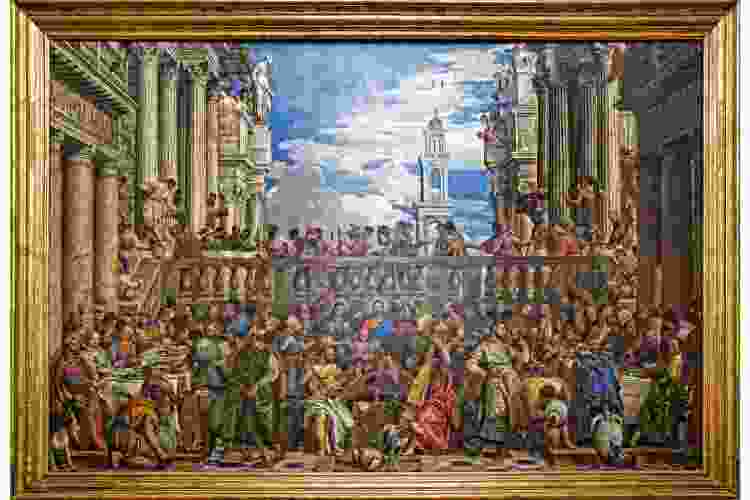
The Louvre Museum in Paris houses an impressive collection of art that spans thousands and thousands of years, including Renaissance paintings like The Wedding at Cana by Paolo Veronese. This Renaissance painting illustrates a biblical story where Jesus is said to have turned water into wine.
Jesus is positioned at the center of a lavish wedding banquet surrounded by his disciples and wedding guests. This grand Renaissance painting is an impressive 22 x 32 feet long and displays over 130 characters in a variety of positions and expressions.
16. Sandro Botticelli, Primavera (1482)
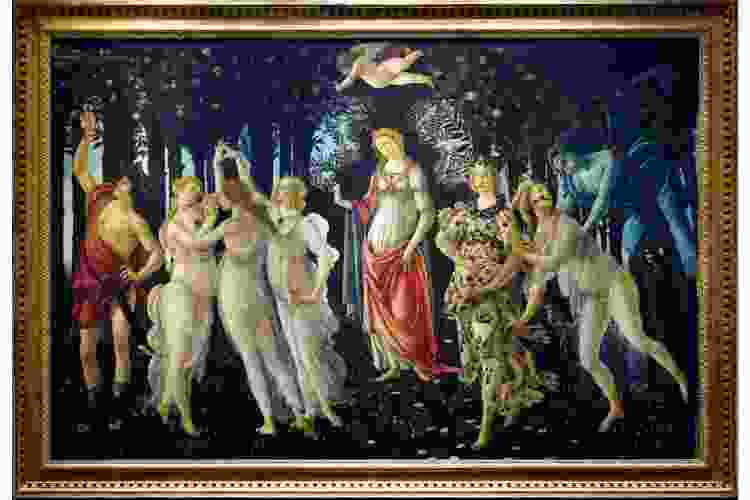
Sandro Botticelli's Renaissance painting, Primavera, depicts nine mythological creatures in a grove filled with orange and laurel trees. Venus stands in the center of the group with the Three Graces dancing in a circle to her left and Mercury, the messenger god, stands at her far left.
To the far right of Venus, Zephyrus, the god of the West wind, grabs hold of a nymph named Chloris who transforms into the goddess of flowers, depicted next to Venus. What made Botticelli such an iconic figure in the world of Renaissance paintings was his acute attention to detail, captured in the delicate renderings of these nine figures, their attire and the surrounding flora.
17. Fra Angelico, The Annunciation (1437-1446)
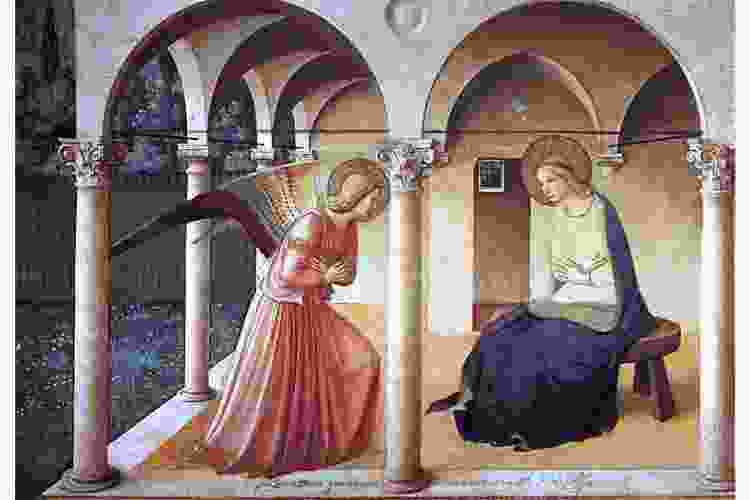
According to the Museo Del Prado, the Spanish National Art Museum, Fra Angelico focused his art solely on religious Renaissance paintings as he believed art to be "an aspect of religious devotion," earning him the name Blessed Angelico.
The Annunciation conveys the moment Angel Gabriel tells the Virgin Mary that she will conceive and mother the Son of God. Angelico uses soft and bright pastel colors to enhance the ethereal atmosphere of the painting, paying particular attention to the architecture of the scene, creating an innate sense of depth and perception.
18. Giorgione, The Tempest (1506-1508)
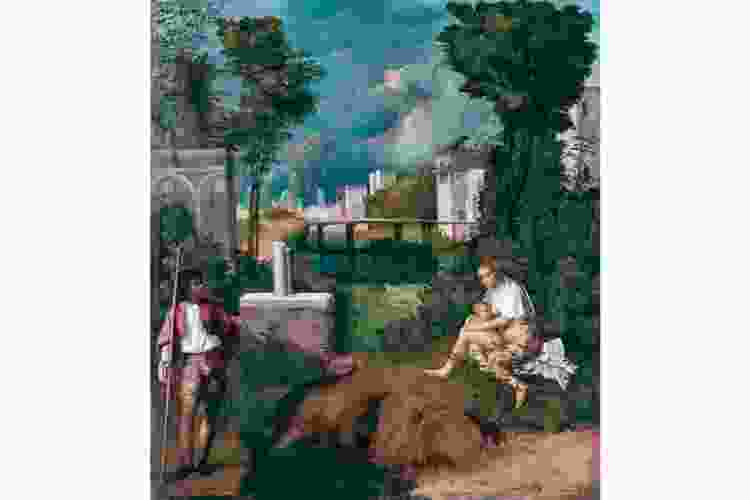
The mysterious atmosphere of Giorgione's The Tempest, has captivated art historians, teachers and viewers from around the world for centuries. The canvas is covered in darkness from the colors he used to the subject matter itself, making this one of the most argued-over Renaissance paintings to find its inner meaning.
On the left, a man in Venetian attire gazes to the right at a woman nursing her baby. The figures seem disturbingly tranquil as a dark and stormy sky covers a city behind them.
19. Andrea del Verrocchio and Leonardo da Vinci, The Baptism of Christ (1472-1475)
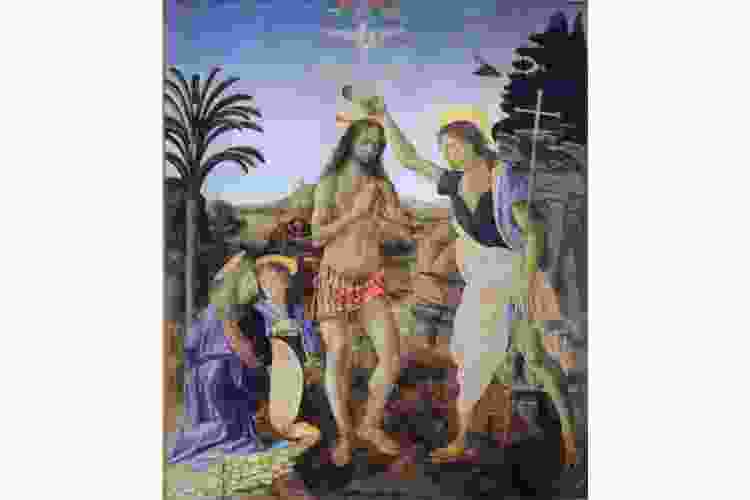
Every great artist has a mentor and Andrea del Verrochio was da Vinci's. Together, they painted The Baptism of Christ. Much like Francesca's Renaissance painting by the same name, Verrocchio and da Vinci's also illustrates the moment John the Baptist pours water over the head of Jesus.
To the left of these famous figures, two angels peer up at the Baptism, holding Jesus' garments. Unlike Francesca's rendering, this Renaissance painting shows more realistic figures. The Baptism of Christ is one of the most historically important Renaissance paintings as it showcases the early work of da Vinci.
20. Parmigianino, Madonna with the Long Neck (1534-1540)
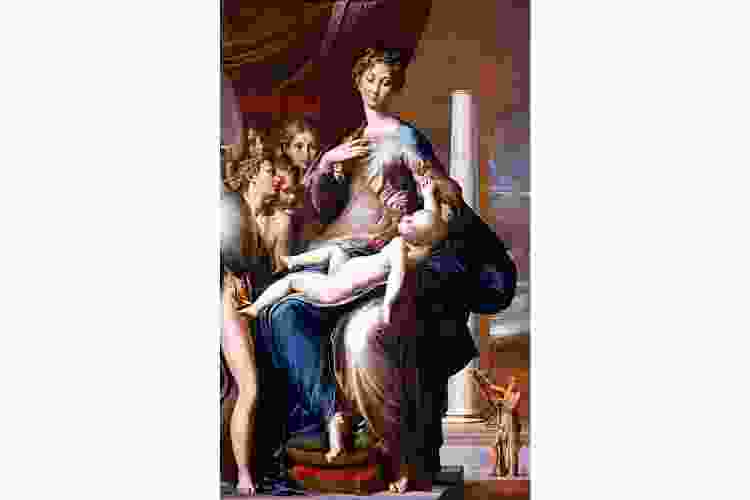
In many ways, Madonna with the Long Neck by Parmigianino is a departure from the other compositions of the High Renaissance. The Madonna dominates the Renaissance painting as she holds the Christ Child in her lap surrounded by a group of angels.
What makes this Renaissance painting so memorable is its exaggerated proportions. Parmigianino gave the Madonna an elongated neck and figures. In her lap, the newborn Jesus is the size of a small child. The whole piece feels asymmetrical, which is a far cry from the other neatly proportioned and balanced Renaissance Paintings.
21. Masaccio, The Tribute Money (1425)
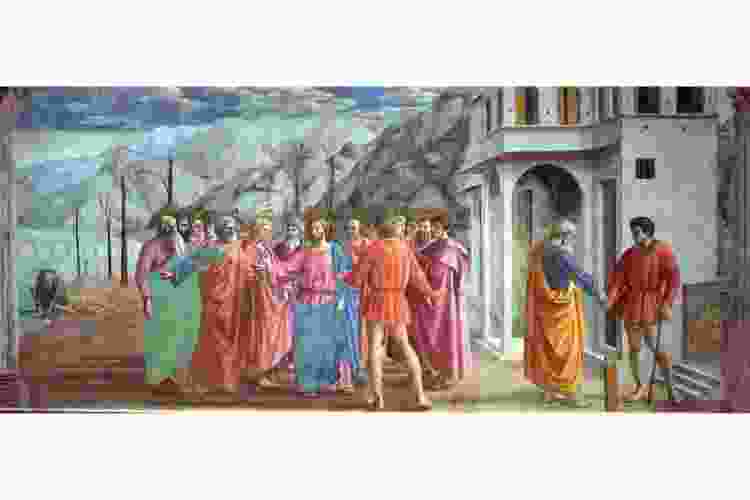
Masaccio's fresco, The Tribute Money, tells a story from the Gospel of Matthew. In this passage, Jesus tells Peter he can find a coin in the mouth of a fish to pay the temple tax.
The story is illustrated in three scenes: Jesus telling Peter, Peter fetching the fish and Peter paying a tax collector. Much like da Vinci, Massaccio was fascinated by anatomical accuracy and aimed to make his figures life-like. Masaccio also employed a technique called linear perspective which uses a vanishing point to draw our eyes into the depths of a scene, like many other famous Renaissance paintings in this list.
22. Correggio, Assumption of the Virgin (1526-1530)
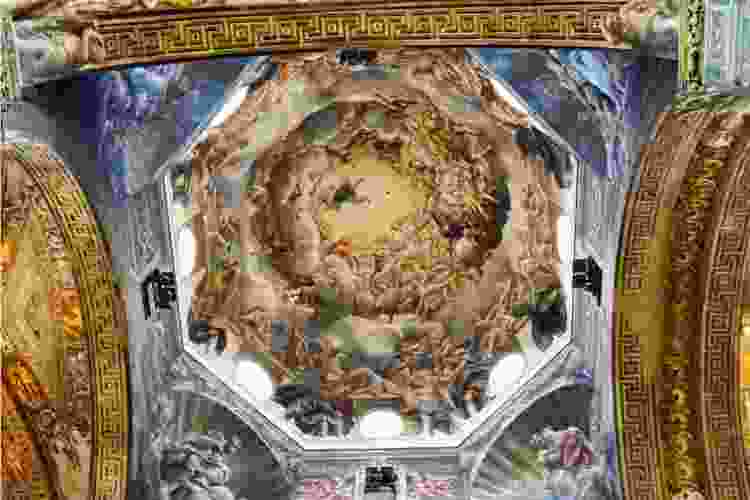
Considered a landmark of High Renaissance art, Correggio's fresco Assumption of the Virgin was painted on the dome of the Parma Cathedral in Italy. Correggio was a pioneer of di sotto in su, which is the method of foreshortening a painting in order to lengthen the canvas.
The Virgin Mary is placed at the highest point of the composition, in the center of the dome structure, surrounded by a swirling group of angels, saints and cherubs. Correggio arranged the latter figures in a spiraling, upward motion that directs perception to the Virgin Mary as she is called into heaven. One of the most beautiful and ambitious Renaissance paintings.
23. Pontormo, The Deposition from the Cross (1525-1528)
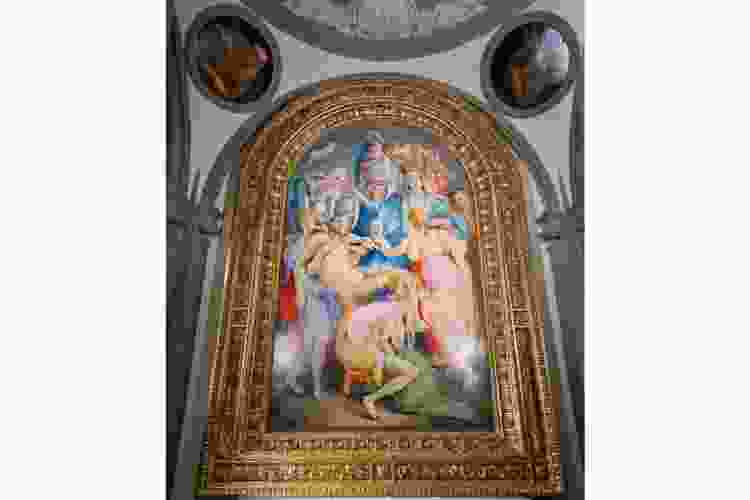
Another departure from classic Renaissance paintings is Pontormo's The Deposition from the Cross. Though the cross itself is not visible, this Renaissance painting portrays the moment Christ is taken off of the cross.
A crowd of moving figures with elongated limbs and exaggerated poses flock around Jesus' body to carry him away almost as if they are moving in the same shape as the wind.
24. Lorenzo Lotto, Portrait of a Woman Inspired by Lucretia (1530-1533)
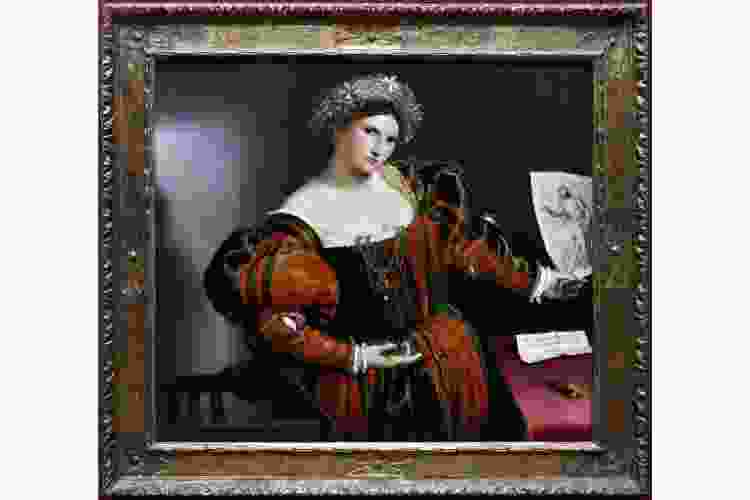
As the old Roman fable goes: When a group of commanders returned home from battle, Lucretia, the wife of a Roman commander named Lucius, was the only wife to have stayed faithful to her husband.
Lorenzo Lotto's depiction of her in the Portrait of a Woman Inspired by Lucretia is fascinating because most women in Renaissance paintings were not illustrated with such strength. Her figure takes up almost the entirety of the canvas and she is embellished in regal dress.
25. Domenico Ghirlandaio, An Old Man and His Grandson (c. 1490)
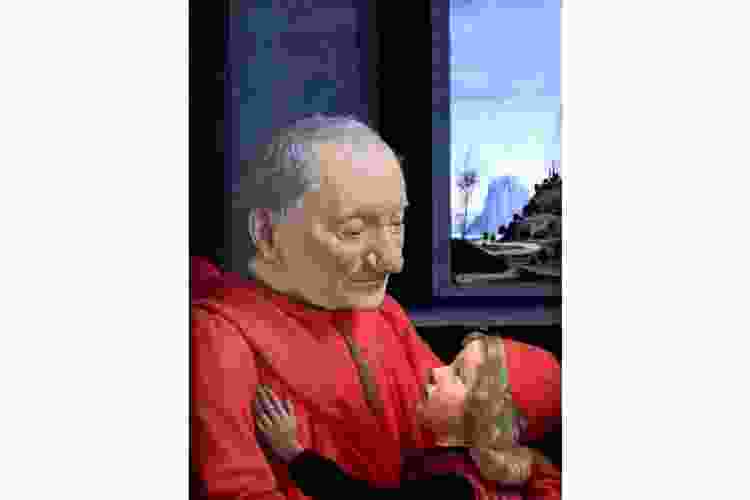
While very few secular portraits of Domenico Ghirlandaio survived, you can steal a glimpse of An Old Man and His Grandson at the Louvre Museum in Paris, along with many other famous Renaissance paintings. This tender Renaissance painting portrays an elderly man holding his grandson in his lap. His grandson gently snuggles the old man, gazing up at him with affection.
Ghirlandaio was committed to portraying figures as they are, using fine technical skills to depict the differences between youth and maturity in this Renaissance painting.
26. Filippo Lippi, Madonna and Child with Two Angels (1465)
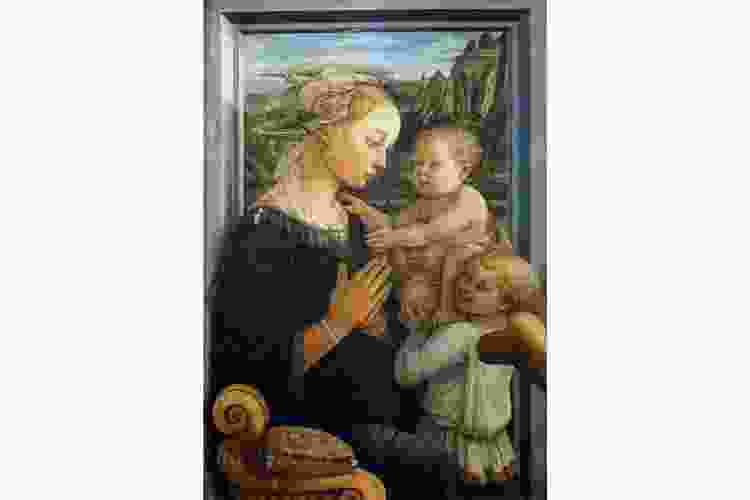
Filippo Lippi's Madonna and Child with Two Angels is one of the most famed early Renaissance paintings, conveying the Virgin Mary holding the Christ Child flanked by two angels.
Lippi used a technique called pyramidal composition, a structure where the elements of the painting are arranged in a pyramid. The main subject — the Madonna - is painted at the top of the pyramid and serves as the focal point while the other elements — the two angels — are arranged to lead the viewer's gaze towards the focal point.
27. Tintoretto, The Miracle of the Slave (1548)
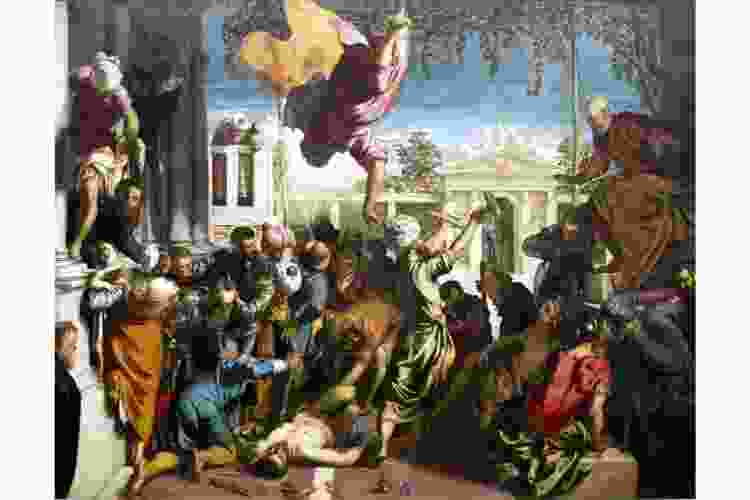
Tintoretto's The Miracle of the Slave depicts a miracle attributed to the patron saint of Venice, St. Mark. In the illustration, St. Mark miraculously appears to rescue an enslaved Christian who has been condemned to death.
Tintoretto created this Renaissance painting in an almost theatrical style. St. Mark ascends from the heavens for the enslaved man lying on the ground, positioned centrally, surrounded by an enraged crowd of executioners and onlookers.
From landscape painting ideas to portraiture ideas, hopefully this list of 27 Most Famous Renaissance Paintings in the World has inspired you to learn how to paint like the greats. And if you're feeling inspired, check out acrylic ideas for beginners or oil painting for beginners and start your artistic journey.
For even more fun art experience ideas, check out other experiences happening on Classpop!

